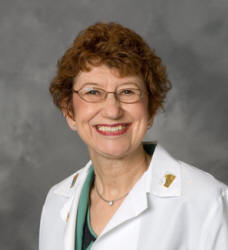Retired Faculty

Below is a list of retired department faculty who were instrumental in the development of the Department of Epidemiology and Biostatistics over the years. We honor and thank them for their research, teaching and mentoring.
-
Joseph Gardiner, PhD | Retired 2024
 Emeritus University Distinguished Professor of Epidemiology and Biostatistics
Emeritus University Distinguished Professor of Epidemiology and Biostatistics
Retired May, 2024 | A Lifetime of Achievement | gardine3@msu.eduJoseph Gardiner is the founder of the Division of Biostatistics in the Department of Epidemiology in the College of Human Medicine. He has been at the university since 1978 and is Professor of Statistics and Probability in the College of Natural Science. Dr. Gardiner has collaborated extensively with epidemiologists and medical researchers at MSU, and with health services researchers outside the university. Since 1991, Dr. Gardiner has had a pivotal role in over 22 epidemiologic/clinical studies, many of these supported by NIH, and as principal biostatistician or collaborator in 12 additional NIH-funded projects. His recent and current research addresses statistical issues in cost-effectiveness analysis which grew from a comprehensive study of cost-effectiveness in heart disease and evaluation of the cost-effectiveness of the implantable cardioverter defibrillator (ICD). His current research “Statistical Innovations in Health Services Research” builds upon this early work. It addresses the development of models that reflect the experience of patients in sustained and changing states of health, and methods for analyzing jointly both cost and effectiveness measures using multivariate methods from survival analyses.
Among his current collaborations with clinical and epidemiologic investigators are: (with Susan Schantz) a study of neuropsychological function among Great Lakes fisheaters exposed to polyhalogenated biphenyls and other environmental contaminants; (with Robert Smith) improving quality of life in high-utilizing somatizing patients in managed care by strengthening the patient-provider relationship; (with RK Thakur) a study of the efficacy of ICD therapy in broader classes of patients; (with Ved Gossain) an evaluation of diagnosed and undiagnosed diabetes including quality of diabetes care among workers in the automobile industry.
Dr. Gardiner serves on the editorial boards of American Heart Journal, Statistics & Probability Letters, Journal of Statistics & Applications, and previously on the editorial boards of Medical Decision Making and the American Statistical Association (ASA)/Society of Industrial & Applied Mathematics (SIAM) Series on Statistics & Applied Probability. He is a standing member of scientific review committees at NIMH and AHRQ.
Dr. Gardiner is a recipient of the Distinguished Faculty Award from MSU. He is a Fellow of the American Statistical Association and an Elected Member of the International Statistical Institute.
SELECTED PUBLICATIONS
1. Hossain MM, Gardiner JC, Laditka JN. The economic benefits of community health centers in lowering preventable hospitalizations: a cost-effectiveness analysis. Health Services Research & Outcomes Methodology. 2015,1:23-36.
2. Gardiner JC, Reed PL, Bonner JD, Haggerty DK, Hale DG. Incidence of hospital-acquired pressure ulcers – a population-based cohort study. International Wound Journal. 2014: Online December 2014; doi: 10.1111/iwj.12386
3. Luo Z, Breslau J, Gardiner JC, Chen Q, Breslau N. Assessing interchangeability at cluster levels with multiple-informant data. Statistics in Medicine. 2014;10;33(3):361-75. PMCID: PMC3947300.
4. Gardiner JC, Luo Z, Roman LA. Fixed effects, mixed effects, random effects and GEE: What are the differences? Statistics in Medicine 2009;28:221-239. PMID: 19012297
-
Claudia Holzman DVM, MPH, PhD | Retired 2023
 Emeritus Professor of Epidemiology and Biostatistics
Emeritus Professor of Epidemiology and Biostatistics
Retired May, 2023 | E-mail: holzman@msu.eduClaudia Holzman, Professor of Epidemiology in the College of Human Medicine at Michigan State University, received her Doctor of Veterinary Medicine degree from Michigan State University in 1976, her Master’s of Public Health degree from the University of Minnesota in 1986, and her PhD degree in epidemiology from the University of Michigan in 1996. Dr. Holzman has been involved in reproductive and perinatal research, primarily focusing on the areas of preterm delivery, brain injury in neonates, birth defects, and vaginal infections. In 1999 Dr. Holzman was awarded the Teacher/Scholar award from the College of Human Medicine at Michigan State University. Currently Dr. Holzman is a co-investigator of a T-32 training program that supports doctoral and post-doctoral trainees in perinatal/pediatric epidemiology.
Dr. Holzman initiated the Pregnancy Outcomes and Community Health (POUCH) Study, which prospectively recruited 3,019 pregnant women in mid-pregnancy from 52 clinics in 5 Michigan communities (1998-2004). The POUCH Study was funded by two consecutive R01s from NICHD and additional support from NINR. The goals of this study are to identify pathways to preterm delivery (e.g. infection, maternal vascular disease) by assessing social and biologic factors. Psychosocial antecedents in the preterm pathways were measured at the individual (participant interview) and ecological (community/ neighborhood conditions and resources) levels. Biologic markers and mediators are being evaluated in maternal serum, plasma, vaginal fluid, urine, saliva, and hair collected at mid-pregnancy. In addition, the study focus includes a detailed examination of the delivered placenta, linking specific pathologic findings to various preterm delivery pathways. An add-on component to the POUCH Study funded an at-home protocol for collection and measurement of stress biomarkers and blood pressure. This portion was supported by a PERI grant, in which Dr. Holzman was one of six international investigators to be funded by the March of Dimes Foundation in their first preterm birth-focused initiative. Later funding for the POUCH Study was garnered from the Thrasher Research Foundation and Centers for Disease Control to support of additional biomarker investigations.
Dr. Holzman has also conducted a three-stage investigation of the epidemiology of bacterial vaginosis (BV) in non-pregnant women that was funded by Blue Cross/Blue Shield of Michigan Foundation. The first study was a cross-sectional assessment of risk factors for BV in 498 women in the Greater Lansing Area. A second study consisted of small focus groups of women who had recurrent BV. A third pilot study was a small clinical trial of douching cessation designed to assess the effects of vaginal douching on changes in vaginal flora.SELECTED PUBLICATIONS
Gargano JW, Holzman CB, Senagore PK, Reuss ML, Pathak DR, Williams MA, Fisher R. Evidence of placental haemorrhage and preterm delivery. BJOG 2010; 117:445-455.
Chen Y, Holzman C, Chung H, Senagore P, Talge NM, Siler-Khodr T. Levels of maternal serum corticotrophin-releasing hormone (CRH) at midpregnancy in relation to maternal characteristics. Psychoneuroendocrinology 2009; DOI: 10.1016/j.psyneuen.2009.11.007.
Gavin AR, Holzman C, Siefert S, Tian Y. Maternal Depressive Symptoms, Depression and Psychiatric Medication Use in Relation to Risk of Preterm Delivery. Womens Health Issues 2009; 19(5):325-34.
Holzman C, Senagore P, Tian Y, Bullen B, DeVos E, Leece C, Zanella A, Fink G, Rhabar H, Sapkal A. Maternal catecholamine levels in midpregnancy and risk of preterm delivery. Am J Epi 2009; 170(8):1014-24.
Holzman C, Eyster J, Kleyn M, Messer L, Kaufman J, Laraia B, O’Campo P, Burke J, Culhane J, Elo I. Maternal weathering and risk of preterm delivery. Am J Public Health 2009; 99(10): 1864-71.
Gargano JW, Holzman CB, Senagore PK, et al. Polymorphisms in thrombophilia and renin-angiotensin system pathways, preterm delivery, and evidence of placental hemorrhage. Am J Obstet Gynecol 2009;201:317.e1-9.
Holzman C, Senagore P, Kelly R. Holzman et al. respond to "Intrauterine Epidemiology" Am J Epidemiol 2009; 170(2):162-163.
Kelly R, Holzman C, Senagore P, Wang J, Tian Y, Rahbar M H, Chung H. Placental vascular pathology findings and pathways to preterm delivery. Am J Epidemiol 2009; 170(2):148-158.
Canady R, Stommel M, Holzman C. Measurement properties of the Centers for Epidemiological Studies Depression Scale (CES-D) in a sample of African-American and White pregnant women. J of Nurs Meas 2009;17(2):91-104.
Elo I, Culhane J, Kohler I, O’Campo P, Burke J, Messer L, Kaufman J, Laraia B, Eyster J, Holzman C. Neighborhood deprivation and small-for-gestational-age term births in the United States. Paediatr Perinat Epidemiol Paediatr Perinat Epidemiol 2009; 23(1):87-96.
Wertz J, Issacs-Cosgrove N, Holzman C, Marsh T. Temporal shifts in microbial communities in non-pregnant African-American women with and without bacterial vaginosis Interdiscip Perspect Infect Dis 2008; DOI: 10.1155/2008/181253.
Gargano JW, Holzman C, Senagore P, Thorsen P, Skogstrand K, Hougaard DM, Rahbar MH, Chung H. Midpregnancy circulating cytokine levels, histologic chorioamnionitis, and spontaneous preterm birth. J Reprod Immunol 2008; 79:100-110.
Xu J, Holzman C, Arvidson C, Chung H, Geopfert A. Midpregnancy vaginal fluid defensins, bacterial vaginosis, and risk of preterm delivery. Obstet Gynecol 2008;112:524-31.
Messer L, Vinikoor L, Laraia B, Kaufman J, Eyster J, Holzman C, Culhane J, Elo I, Kohler I, Burke J, O’Campo P. Socioeconomic domains and associations with preterm birth. Soc Sci Med 2008;67:1247-1257.
Canady R, Broman C, Holzman C. Discrimination and symptoms of depression in
pregnancy among African-American and White women. Womens Health Issues 2008; 18(4):292-300.Tiedje LB, Holzman C, Kallen K, DeVos E, Xu J. Hostility and anomie: links to preterm delivery
subtypes and ambulatory blood pressure at mid-pregnancy. Soc Sci Med 2008; 66(6):1310-21O’Campo P, Burke J, Culhane J, Elo IT, Eyster J, Holzman C, Messner LC, Kaufman JS, Laraia BA. Neighborhood deprivation and preterm birth among non-Hispanic black and white women in eight geographic areas in the Unitied States. Am J Epidemiol 2007; 167(2):155-63.
Holzman C, Lin X, Senagore, P, Chung H. Histologic chorioamnionitis and preterm delivery. Am J Epidemiol 2007; 166(7): 786-94.
Scheid JM, Holzman C, Jones NM, Friderici K, Nummy K, Symonds L, Sikorskii A, Regier M, Fisher R . Depressive symptoms in mid-pregnancy, lifetime stressors and the 5-HTTLPR genotype. Genes Brain Behav 2007; 6(5):453.
Xue F, Holzman C, Rahbar MH, Trosko K, Fischer L. Maternal fish consumption, mercury levels, and risk of preterm delivery. Environ Health Perspect 2007; 115 (1):42-7.
Messer L, Kaufman J, Laraia B, O’Campo P, Burke J, Eyster J, Holzman C, Culhane J, Elo I. The development of a standardized neighborhood deprivation index. J Urban Health 2006; 83(6):1041-62.Jones NM, Holzman C, Zanella A, Leece C, Rahbar MH and the Prematurity Study Group. Assessing mid-trimester salivary cortisol levels across three consecutive days in pregnant women using an at-home collection protocol. Paediatr Perinat Epidemiol 2006; 20(3):425-37.
Holzman C, Eyster J, Tiedje LB, Roman LA, Seagull E, Rahbar, MH. A life course perspective on depressive symptoms in mid-pregnancy. Matern Child Health J 2006;10:127-38.
Holzman C, Leventhal J, Qui H, Jones N, Wang J, BV Study Group. Factors linked to bacterial vaginosis in non-pregnant women Am J Public Health 2001;91:1664-70.
Holzman C, Bullen B, Fisher R, Paneth P, Reuss L, and the Prematurity Study Group. Pregnancy outcomes and community health: the POUCH Study of preterm delivery. Paediatr Perinat Epidemiol 2001:15 (suppl. 2) 136-58.
Holzman C, Jetton J, Siler-Khodr T, Fisher R, Rip T. Second trimester corticotropin-releasing
hormone levels in relation to preterm delivery and ethnicity. Obstet Gynecol 2001;97:657-63.Wadland WC, Barry HC, Farquhar L, Holzman C, White A. Training medical students in evidence-based medicine: a community campus approach. Fam Med 1999;31:703-8.
Holzman C, Jetton J, Fisher R, Senagore P, Mohan M, Paneth N. Association of maternal IgM concentrations above the median at 15-19 weeks of gestation and early preterm delivery. Lancet 1999; 354;1095-6.
Holzman C, Paneth N, Fisher R, and the MSU prematurity group. Rethinking the concept of risk factors for preterm delivery: antecedents, markers, and mediators. Prenat Neonat Med 1998; 3: 47-52.
Holzman C, Paneth N. Preterm birth: from prediction to prevention. Am J Public Health 1998; 88:183-4.
Courval JM, DeHoog JV, Holzman CB, Tay EM, Fischer L, Humphrey H, Paneth NS, Sweeney AM. Fish consumption and other characteristics of reproductive-aged Michigan anglers--a potential population for studying the effects of consumption of Great Lakes fish on reproductive health. Toxicol Ind Health 1996; 12: 347-359.
Holzman C, Paneth N, Little R, Pinto-Martin J, NBH Study Team. Perinatal brain injury in premature infants born to mothers using alcohol in pregnancy. Pediatrics 1995; 95: 66-73. (Selected for inclusion in the Year Book of Neonatal and Perinatal Medicine).
ADVANCE \D 2.15Pinto-Martin J, Riolo S, Cnaan A, Holzman C, Paneth N. Cranial ultrasound prediction of disabling and non-disabling cerebral palsy in a low birth weight population. Pediatrics 1995; 95:249-254.
-
Jim Pivarnik, PhD | Retired 2022

Professor Epidemiology and Biostatistics and Kinesiology
Former Director Center for Physical Activity and Health
Director, Human Energy Research LaboratoryExpert on physical fitness, special interest in fitness related to women and pregnancy.
Retired 2022 | jimpiv@msu.edu
-
Nigel Paneth, MD, MPH | Retired 2021
 Emeritus University Distinguished Professor of Epidemiology and Biostatistics and Pediatrics
Emeritus University Distinguished Professor of Epidemiology and Biostatistics and Pediatrics
Retired: May, 2021 | paneth@msu.eduAlthough Dr. Paneth retired in May 2021 from his full-time faculty position, he remains active in our department as a part-time faculty member. He continues to mentor students and post-doctoral fellows who are completing their work, but is not taking on new students. He is supported by his involvement as co-principal investigator on Prenatal Exposures and Child Health Outcomes (UH3 ODO23285), one of the two NIH ECHO program grants in the department, as well as serving as a co-investigator and/or consultant on other NIH initiatives.
-
Janet Osuch, MD | Retired 2018
 Professor of Epidemiology and Biostatistics and Surgery
Professor of Epidemiology and Biostatistics and Surgery Retired: 2018 | Email: osuch@msu.edu
Dr. Osuch, a professor of Surgery and Epidemiology. Janet limited her surgical practice to diseases of the breast from 1987-1998, and founded the Comprehensive Breast Health Clinic at MSU in 1992. She obtained a Master's degree from this department in 2000.
-
Mahdi Saeed, DVM, MPH, PhD | Retired 2017
 Emeritus Professor of Epidemiology and Biostatistics
Emeritus Professor of Epidemiology and BiostatisticsRetired: 2017 | E-mail: saeeda@msu.edu
Dr. Saeed has been conducting research on food safety and prevention of foodborne diseases, zoonotic diseases and their impact on human populations. Assesment of the role of exposure to animals in the developmnent of zoonotic diseases such as Campylobacteriosis and salmonellosis. Developing, with other professionals, state-wide programs in food safety epidemiology and emerging infectious diseases. Development of new courses in food safety epidemiology for a new food safety specialty degree at Michigan State University.
-
Naomi Breslau, PhD | Retired 2016
 Emeritus Professor of Epidemiology and Biostatistics
Emeritus Professor of Epidemiology and Biostatistics Retired: 2016 / Deceased: 2018
Dr. Breslau was a highly cited psychiatric epidemiologist and PhD-trained sociologist who made major contributions and scientific advances in the epidemiological study of numerous psychiatric conditions and behavioral disturbances, most prominently post-traumatic stress disorder and tobacco dependence. Learn more about the life and career of Dr. Breslau.
-
Julie Wirth, PhD | Retired 2015
 Assistant Professor of Epidemiology and Biostatistics
Assistant Professor of Epidemiology and Biostatistics Retired: 2015 / Deceased: 2020
Dr. Wirth was a PhD microbiologist with graduate training in epidemiology, whose current primary research focus was the study of exposures to organochlorines and male reproductive health. She also was an expert in research on environmental chemicals and human health generally, and studying gene-environment interactions using epidemiological and microbiological research approaches. Learn More about the life and career of Dr. Wirth.


